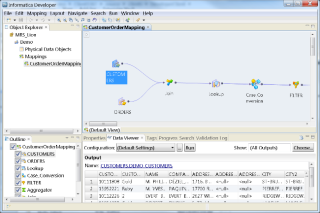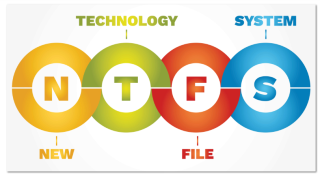Cómo instalar Vtiger CRM Open Source Edition en CentOS 7
Aprende cómo instalar Vtiger CRM, una aplicación de gestión de relaciones con el cliente, en CentOS 7 para aumentar tus ventas y mejorar el servicio al cliente.
Wiki.js is a free and open source, modern wiki app built on Node.js, Git and Markdown. Wiki.js source code is publicly hosted on Github. This guide will show you how to install Wiki.js on a fresh Ubuntu 18.04 LTS Vultr instance using Node.js, MongoDB, PM2, Nginx, Git and Acme.sh.
Requirements to run Wiki.js and finish this guide are as follows:
A/AAAA records set upCheck the Ubuntu version.
lsb_release -ds
# Ubuntu 18.04.4 LTS
Create a new non-root user account with sudo access and switch to it.
adduser johndoe --gecos "John Doe"
usermod -aG sudo johndoe
su - johndoe
NOTE: Replace johndoe with your username.
Set up the timezone.
sudo dpkg-reconfigure tzdata
Ensure that your system is up to date.
sudo apt update && sudo apt upgrade -y
Install necessary packages.
sudo apt install -y build-essential apt-transport-https
Git 2.7.4 comes preinstalled on Ubuntu server edition, so we don't need to install it. If you want to install a newer version, you can use third-party PPAs or compile the latest release of Git from source.
You can verify the currently installed version of Git by running:
git --version
# git version 2.7.4
If you want to install a newer version of Git software, you can use the following.
# Remove existing git package
sudo apt remove -y git
sudo apt-get install software-properties-common
sudo add-apt-repository -y ppa:git-core/ppa
sudo apt update && sudo apt upgrade -y
sudo apt install -y git
Verify Git version.
git --version
# git version 2.17.0
Install Node.js by utilizing the NodeSource APT repository for Node.js.
curl -sL https://deb.nodesource.com/setup_8.x | sudo -E bash -
sudo apt install -y nodejs
Check the Node.js and NPM versions.
node -v && npm -v
# v8.11.2
# 5.6.0
We will use the official MongoDB repositories, which are kept up-to-date with the most recent major and minor MongoDB releases.
Install MongoDB Community Edition.
sudo apt install -y mongodb
Check the version.
mongo --version | head -n 1 && mongod --version | head -n 1
# MongoDB shell version v3.6.3
# db version v3.6.3
Install Nginx.
wget https://nginx.org/keys/nginx_signing.key
sudo apt-key add nginx_signing.key
rm nginx_signing.key
sudo -s
printf "deb https://nginx.org/packages/mainline/ubuntu/ $(lsb_release -sc) nginx\ndeb-src https://nginx.org/packages/mainline/ubuntu/ $(lsb_release -sc) nginx\n" >> /etc/apt/sources.list.d/nginx_mainline.list
exit
sudo apt update
sudo apt install -y nginx
Check the version.
sudo nginx -v
# nginx version: nginx/1.15.0
Enable and start Nginx.
sudo systemctl enable nginx.service
sudo systemctl start nginx.service
Configure Nginx as a reverse proxy for the Wiki.js application.
Run sudo vim /etc/nginx/conf.d/wiki.js.conf and populate it with the basic reverse proxy configuration below.
server {
listen [::]:80;
listen 80;
server_name wiki.example.com;
root /usr/share/nginx/html;
charset utf-8;
client_max_body_size 50M;
location /.well-known/acme-challenge/ {
allow all;
}
location / {
proxy_set_header Host $http_host;
proxy_set_header X-Real-IP $remote_addr;
proxy_pass http://127.0.0.1:3000;
proxy_http_version 1.1;
proxy_set_header Upgrade $http_upgrade;
proxy_set_header Connection "upgrade";
proxy_next_upstream error timeout http_502 http_503 http_504;
}
}
The only thing you need to change in the above config is the server_name directive and potentially the proxy_pass directive if you decide to configure any other port besides 3000. Wiki.js uses port 3000 by default.
Check the configuration.
sudo nginx -t
Reload Nginx.
sudo systemctl reload nginx.service
Securing your wiki with HTTPS is not necessary, but it will secure your site's traffic. Acme.sh is a pure unix shell software for obtaining SSL certificates from Let's Encrypt with zero dependencies.
Download and install Acme.sh.
sudo mkdir /etc/letsencrypt
git clone https://github.com/Neilpang/acme.sh.git
cd acme.sh
sudo ./acme.sh --install --home /etc/letsencrypt --accountemail [email protected]
cd ~
Check the version.
/etc/letsencrypt/acme.sh --version
Obtain RSA and ECDSA certificates for wiki.example.com domain/hostname.
# RSA 2048
sudo /etc/letsencrypt/acme.sh --issue --home /etc/letsencrypt -d wiki.example.com --webroot /usr/share/nginx/html --reloadcmd "sudo systemctl reload nginx.service" --accountemail [email protected] --ocsp-must-staple --keylength 2048
# ECDSA/ECC P-256
sudo /etc/letsencrypt/acme.sh --issue --home /etc/letsencrypt -d wiki.example.com --webroot /usr/share/nginx/html --reloadcmd "sudo systemctl reload nginx.service" --accountemail [email protected] --ocsp-must-staple --keylength ec-256
After running the above commands, your certificates and keys will be in:
/etc/letsencrypt/wiki.example.com directory./etc/letsencrypt/wiki.example.com_ecc directory.After obtaining certificates from Let's Encrypt, we need to configure Nginx to use them.
Run sudo vim /etc/nginx/conf.d/wiki.js.conf again and configure Nginx as an HTTPS reverse proxy.
server {
listen [::]:443 ssl http2;
listen 443 ssl http2;
listen [::]:80;
listen 80;
server_name wiki.example.com;
root /usr/share/nginx/html;
charset utf-8;
client_max_body_size 50M;
location /.well-known/acme-challenge/ {
allow all;
}
# RSA
ssl_certificate /etc/letsencrypt/wiki.example.com/fullchain.cer;
ssl_certificate_key /etc/letsencrypt/wiki.example.com/wiki.example.com.key;
# ECDSA
ssl_certificate /etc/letsencrypt/wiki.example.com_ecc/fullchain.cer;
ssl_certificate_key /etc/letsencrypt/wiki.example.com_ecc/wiki.example.com.key;
location / {
proxy_set_header Host $http_host;
proxy_set_header X-Real-IP $remote_addr;
proxy_pass http://127.0.0.1:3000;
proxy_http_version 1.1;
proxy_set_header Upgrade $http_upgrade;
proxy_set_header Connection "upgrade";
proxy_next_upstream error timeout http_502 http_503 http_504;
}
}
Check the configuration.
sudo nginx -t
Reload Nginx.
sudo systemctl reload nginx.service
Create an empty document root folder where Wiki.js should be installed.
sudo mkdir -p /var/www/wiki.example.com
Navigate to the document root folder.
cd /var/www/wiki.example.com
Change ownership of the /var/www/wiki.example.com folder to the user johndoe.
sudo chown -R johndoe:johndoe /var/www/wiki.example.com
From the /var/www/wiki.example.com folder, run the following command to download and install Wiki.js.
curl -sSo- https://wiki.js.org/install.sh | bash
To view the currently installed version of Wiki.js, you can run the following command.
node wiki --version
# 1.0.78
Once the installation is completed, you'll be prompted to run the configuration wizard.
Start the configuration wizard.
node wiki configure
This will notify you to browse to http://localhost:3000 to configure Wiki.js. If you have Nginx in front of Wiki.js, you can open your domain name (e.g. http://wiki.example.com) instead of going to localhost.
Using your web browser, navigate to http://wiki.example.com and follow the on-screen instructions. All settings entered during the configuration wizard are saved in the config.yml file. The configuration wizard will automatically start Wiki.js for you.
By default, Wiki.js will not start automatically after a system reboot. In order to make it start on boot, we need to setup PM2. PM2 comes bundled with Wiki.js as a local NPM module, so we don't need to install PM2 globally.
Tell PM2 to configure itself as a startup service.
/var/www/wiki.example.com/node_modules/pm2/bin/pm2 startup
Finally, save the current PM2 configuration.
/var/www/wiki.example.com/node_modules/pm2/bin/pm2 save
Wiki.js runs as a background process, using PM2 as its process manager.
Aprende cómo instalar Vtiger CRM, una aplicación de gestión de relaciones con el cliente, en CentOS 7 para aumentar tus ventas y mejorar el servicio al cliente.
Esta guía completa le mostrará cómo configurar un servidor Counter-Strike 1.6 en Linux, optimizando el rendimiento y la seguridad para el mejor juego. Aprende los pasos más recientes aquí.
LiteCart es una plataforma de carrito de compras gratuita y de código abierto escrita en PHP, jQuery y HTML 5. Es un software de comercio electrónico simple, liviano y fácil de usar.
¿Usando un sistema diferente? MODX Revolution es un sistema de gestión de contenido (CMS) de nivel empresarial rápido, flexible, escalable, gratuito y de código abierto escrito i
McMyAdmin es un panel de control del servidor de Minecraft utilizado para administrar su servidor. Aunque McMyAdmin es gratuito, hay varias ediciones, algunas de las cuales son pai
TeamTalk es un sistema de conferencia que permite a los usuarios tener conversaciones de audio / video de alta calidad, chat de texto, transferir archivos y compartir pantallas. Es yo
Using a Different System? Introduction CyberPanel is one of the first control panels on the market that is both open source and uses OpenLiteSpeed. What thi
¿Usando un sistema diferente? Introducción Grafana es un software de código abierto que transforma múltiples feeds de sistemas como Graphite, Telegraf, an
PhpBB es un programa de tablón de anuncios de código abierto. Este artículo le mostrará cómo instalar phpBB en la parte superior de un servidor web Apache en Ubuntu 16.04. Fue escrito
¿Usando un sistema diferente? Foreman es una herramienta gratuita y de código abierto que lo ayuda con la configuración y administración de servidores físicos y virtuales. Forema
Tener un solo usuario, que es root, puede ser peligroso. Así que arreglemos eso. Vultr nos brinda la libertad de hacer lo que queramos con nuestros usuarios y nuestros servidores.
Using a Different System? ESpeak can generate text-to-speech (TTS) audio files. These can be useful for many reasons, such as creating your own Turin
¿Usando un sistema diferente? Thelia es una herramienta de código abierto para crear sitios web de comercio electrónico y administrar contenido en línea, escrito en PHP. Código fuente de Thelia i
¿Usando un sistema diferente? Fuel CMS es un sistema de gestión de contenido basado en CodeIgniter. Su código fuente está alojado en GitHub. Esta guía le mostrará cómo t
¿Usando un sistema diferente? Couch CMS es un sistema de gestión de contenido (CMS) simple y flexible, gratuito y de código abierto que permite a los diseñadores web diseñar
¿Usando un sistema diferente? LibreNMS es un completo sistema de monitoreo de red de código abierto. Utiliza SNMP para obtener los datos de diferentes dispositivos. Una variedad
Introducción ¿Tiene problemas con la conectividad cuando los visitantes de otros países acceden a su sitio web? Preguntándose por qué la velocidad de descarga de su extranjero
¿Usando un sistema diferente? Ghost es una plataforma de blogs de código abierto que ha estado ganando popularidad entre los desarrolladores y usuarios comunes desde su 201
Pip es una herramienta para administrar paquetes de Python. El uso de un administrador de paquetes permite una gestión eficiente de su servidor. En este tutorial, explicaré cómo t
Cacti es una herramienta de gráficos y monitoreo de red de código abierto y libre escrita en PHP. Con la ayuda de RRDtool (herramienta de base de datos Round-Robin), Cacti se puede usar t
ZPanel, un panel de control de alojamiento web popular, se bifurcó en 2014 a un nuevo proyecto llamado Sentora. Aprende a instalar Sentora en tu servidor con este tutorial.
Aprende cómo instalar Vtiger CRM, una aplicación de gestión de relaciones con el cliente, en CentOS 7 para aumentar tus ventas y mejorar el servicio al cliente.
Esta guía completa le mostrará cómo configurar un servidor Counter-Strike 1.6 en Linux, optimizando el rendimiento y la seguridad para el mejor juego. Aprende los pasos más recientes aquí.
Los ataques de ransomware van en aumento, pero ¿puede la IA ayudar a lidiar con el último virus informático? ¿Es la IA la respuesta? Lea aquí, sepa que la IA es una bendición o una perdición
ReactOS, un sistema operativo de código abierto y gratuito, está aquí con la última versión. ¿Puede satisfacer las necesidades de los usuarios de Windows de hoy en día y acabar con Microsoft? Averigüemos más sobre este estilo antiguo, pero una experiencia de sistema operativo más nueva.
Whatsapp finalmente lanzó la aplicación de escritorio para usuarios de Mac y Windows. Ahora puede acceder a Whatsapp desde Windows o Mac fácilmente. Disponible para Windows 8+ y Mac OS 10.9+
Lea esto para saber cómo la Inteligencia Artificial se está volviendo popular entre las empresas de pequeña escala y cómo está aumentando las probabilidades de hacerlas crecer y dar ventaja a sus competidores.
Recientemente, Apple lanzó macOS Catalina 10.15.4, una actualización complementaria para solucionar problemas, pero parece que la actualización está causando más problemas que conducen al bloqueo de las máquinas Mac. Lee este artículo para obtener más información
13 Herramientas comerciales de extracción de datos de Big Data
Nuestra computadora almacena todos los datos de una manera organizada conocida como sistema de archivos de diario. Es un método eficiente que permite a la computadora buscar y mostrar archivos tan pronto como presiona buscar.









